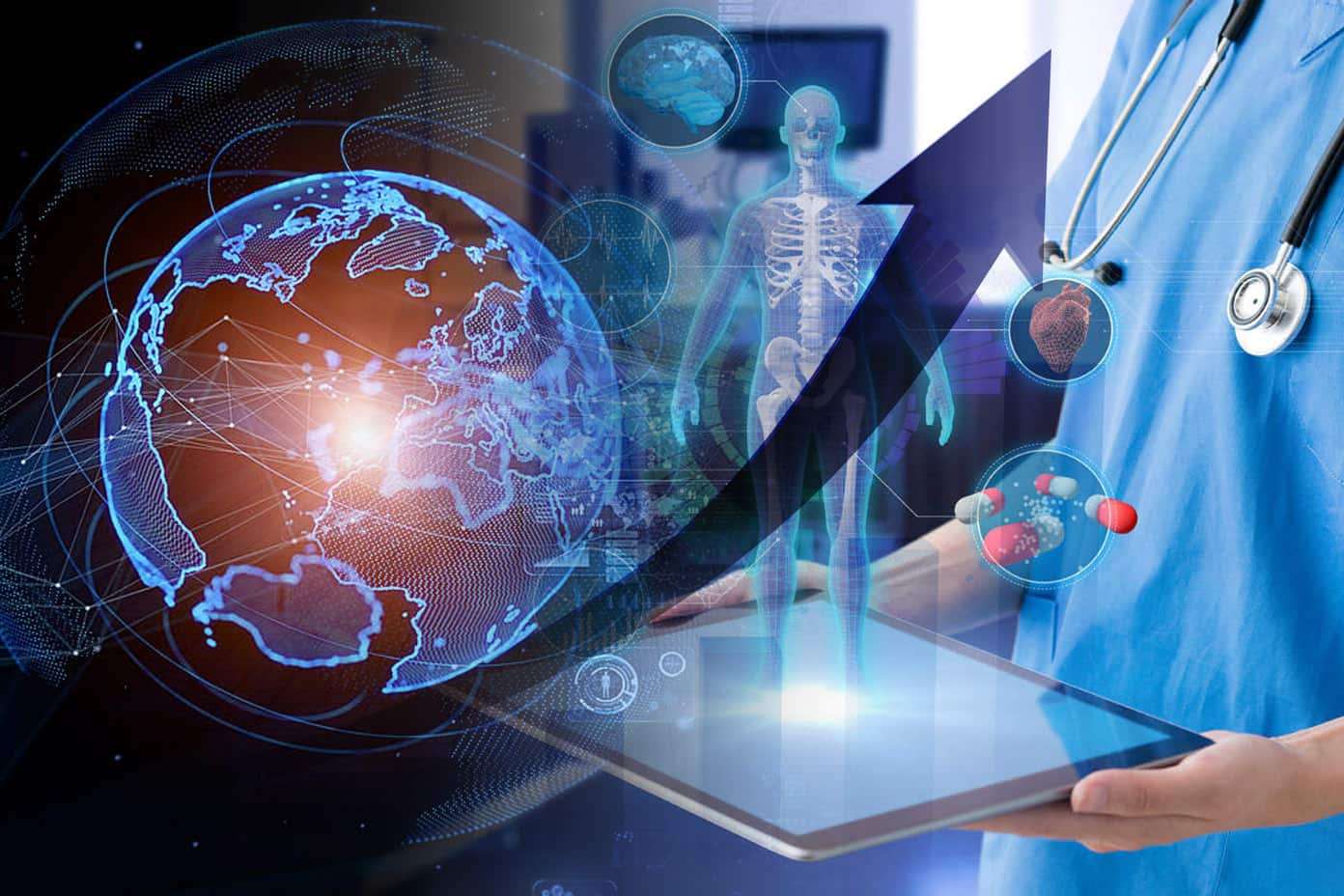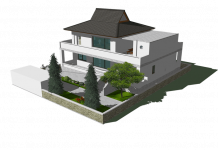In 2023/2024, healthcare technology promises advancements that will redefine patient care.
From remote consultations to revolutionary diagnostic tools, these five innovations are set to make significant impacts. Stay informed and be prepared for what's next in healthcare tech.

Technological Revolution in Healthcare in 2023/24
The 2023/24 revolution regarding tech in healthcare represents a pivotal shift in how care is delivered and received.
It's not just about new tools; it's about the integration of these tools into the healthcare ecosystem to enhance patient care, optimize operational efficiencies, and drive informed decision-making.
This period signifies the convergence of various healthcare technology advancements, leading to better patient outcomes, reduced disparities, and a more holistic approach to wellness.
This technology in medical fields brings many benefits:
- Enhanced Patient Care: Technology ensures accurate and timely diagnostics.
- Cost Savings: Efficient processes reduce healthcare expenses.
- Accessibility: Remote care reaches underserved areas.
- Personalized Treatments: Tailored therapies based on individual data.
- Reduced Errors: AI and automation diminish human mistakes.
- Patient Empowerment: Individuals can monitor and manage their health.
The 5 Main Innovations in Healthcare Technology
During this last period, the healthcare industry has and will have witnessed a technological renovation thanks to this 5 news in medical tech:
1- Telemedicine: The New Norm for Patient Consultation
Telemedicine involves using digital tools to provide healthcare services remotely. This means doctors can consult, diagnose, and even treat patients without being in the same location.
Recently, it's become the norm due to:
- Pandemic Response: Social distancing led to a surge in remote consultations.
- Accessibility: Patients in remote areas get access to specialists.
- Convenience: Reduces travel, waiting times, and associated costs.
- Technology: Improved internet speeds and secure platforms make it viable.
- Acceptance: Both physicians and patients are increasingly comfortable with this mode.
Example: a woman living in a rural town has sudden skin irritations. Instead of traveling hours to the nearest dermatologist, she schedules a telemedicine appointment.
Using a secure video call, she shows the affected area to the doctor. The dermatologist assesses the condition, asks relevant questions, and prescribes a topical medication.
The patient gets the treatment she needs without leaving her home.
2- Wearable Health Monitors: Real-time Patient Data Access
Wearable health monitors are devices you wear, like smartwatches or fitness trackers, that measure health metrics continuously. They can track heart rate, sleep patterns, steps taken, and more.
Thanks to healthcare information technology, these devices instantly relay information, allowing you and healthcare professionals to view and act on data immediately. It results in:
- Proactive Health: Continuous monitoring helps in early detection of anomalies.
- Informed Decisions: Data-driven insights guide better health choices.
- Emergency Alerts: Some devices detect critical changes and alert the user or medical staff.
Example: A patient wears a heart monitor after a recent surgery. The device notices an irregular heartbeat and instantly sends an alert to the patient and his cardiologist.
Immediate action is taken, potentially averting a severe health issue.
3- AI-Driven Diagnostics: Precise and Rapid Results
AI-Driven Diagnostics refers to the use of artificial intelligence in analyzing medical data, like X-rays or MRI scans, to identify diseases or medical conditions. Its recent impact:
- Speed: Faster diagnostic results compared to manual analysis.
- Precision: Reduces human error, offering more accurate diagnoses based on digital health records.
- Workload Relief: Assists healthcare professionals in managing large volumes of data.
Example: At a city hospital, an AI system screens mammograms within the clinical information system. It quickly identifies potential tumors in one patient's scan, which might have been overlooked.
4- 3D Bioprinting: Creating Organs in Labs
3D Bioprinting is a process where biological materials, cells, and supporting structures are combined to fabricate biomedical parts, notably lab-grown organs. Its recent impact:
- Transplant Solutions: Addresses the shortage of organ donors.
- Customization: Organs tailored to specific patient needs, reducing rejection risks.
- Research: Allows testing of drugs on bioprinted tissues, not on animals.
Example: A patient with liver failure is on a long transplant waiting list. A lab uses 3D Bioprinting to grow a liver using the patient's cells. This custom organ is transplanted, eliminating the wait.
5- Virtual Reality Rehabilitation: Healing through Immersive Environments
Virtual Reality (VR) Rehabilitation uses virtual environments and simulations for patient therapy and recovery. Its recent impact:
- Engagement: Makes rehabilitation exercises more engaging and motivating.
- Customization: Tailor therapy sessions to individual needs and progress.
- Safe Environment: Allows patients to practice movements without real-world risks.
Example: After a car accident, a patient has difficulty walking. During VR Rehabilitation, he virtually "walks" on scenic trails, which motivates him. The system adjusts difficulty based on his progress.
Current situation and limits of these innovations
Telemedicine:
- Situation: Integrated into healthcare systems globally, enabling remote consultations.
- Limits: Dependence on reliable internet connectivity, licensing restrictions across regions, and reduced physical touchpoints in patient care.
Wearable Health Monitors:
- Situation: Commercially available, offering diverse health metrics tracking.
- Limits: Data accuracy concerns, limited battery life, and potential over-reliance without professional interpretation.
AI-Driven Diagnostics:
- Situation: Artificial intelligence in healthcare assists in specialties like radiology, dermatology, and pathology.
- Limits: Requires extensive training data, potential biases in algorithms, and can't replace human judgment entirely.
3D Bioprinting:
- Situation: Progress in printing simple tissues and basic organ structures.
- Limits: Though there's progress in tissue creation, fully functional, transplantable organs are still in developmental stages.
Virtual Reality Rehabilitation:
- Situation: Virtual reality in healthcare is increasingly used in physical and cognitive rehab.
- Limits: High equipment costs, potential motion sickness, and lack of personalization for specific patients.
Other healthcare technology innovations to consider
Certainly, there are other noteworthy innovations regarding health and technology:
- Blockchain in Healthcare: Ensures data integrity, privacy, and interoperability in an electronic health record software.
- Remote Patient Monitoring: Real-time monitoring outside conventional clinical settings, creating electronic healthcare records.
- Gene Editing (CRISPR/Cas9): Modifies genes to treat genetic disorders.
- Robotic Surgery: Robots assist surgeons for precision operations.
- Nanomedicine: Uses nanoparticles to diagnose, treat, and prevent diseases.
Conclusion
The healthcare landscape is undergoing a transformative phase, with health tech at its core. These five innovations highlight a future where healthcare is more accessible, personalized, and effective.
While telemedicine and wearable health monitors are already widely integrated, continuous enhancements are expected. AI-driven diagnostics offer promise, yet require vigilant oversight.
3D bioprinting remains in its nascent stages but holds immense potential. Lastly, VR in rehabilitation is shaping as a powerful tool for healthcare technology and recovery.







